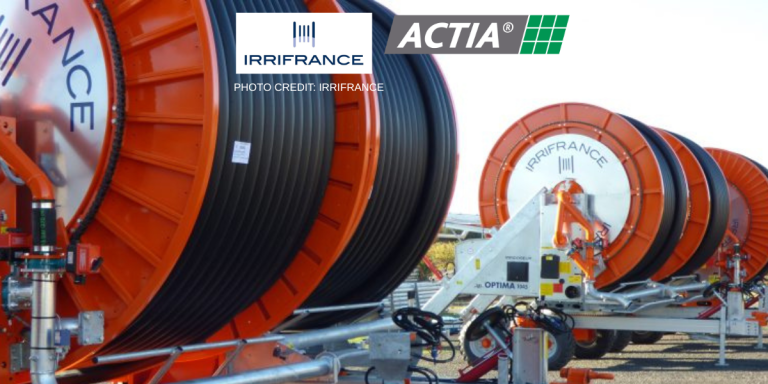ACTIA expertise from augmented architecture to vehicle lifecycle management
At Busworld 2023, ACTIA’s stand will be showcasing its comprehensive expertise in Augmented Architecture and Vehicle Lifecycle Management, driven by the Group’s technological and industrial excellence.
ACTIA is a leading equipment supplier specialising in E/E architecture and on-board systems, helping vehicle manufacturers – OEMs – to design vehicles based on a new on-board architecture known as SDV (Software-Defined Vehicle) architecture. ACTIA’s Augmented Architecture and its range of services based on the use of vehicle data to manage the vehicle’s lifecycle form the basis of solutions for its OEM partners and, by extension, for transport operators. ACTIA is therefore reinforcing its strong value proposition for all bus and coach professionals.
1-The new E/E architecture: towards zonal architecture
Innovation in the automotive industry has led to major advances in vehicle safety, performance, and comfort. In response, manufacturers are moving their vehicles towards a centralised architecture, organised by domain, which groups the vehicle’s functions into communicating domains, otherwise known as zonal architecture.
Fewer cables, less hardware, and more performance
This approach arranges the vehicle’s functions into zones defined according to their location, minimising the distance between each device and its assigned zone controller. These zone controllers are then connected to the central ECU via a cable network, thereby offering considerable advantages, including a reduction in the number of cables required and improved data transmission speed.
The four layers of zonal architecture
We are therefore in the midst of a structural change in the automotive market, something which ACTIA, an expert in the field, has clearly understood. ‘Four-tier’ vehicle architecture is a fundamentally new approach for the industry, redefining the way in which vehicles are designed, operated, and connected.
- The first tier is the hardware, i.e., the ECUs: This layer represents the essential electronic and computer hardware, including the ECUs, which power the car’s equipment and enable it to operate.
- The second tier is the middleware, or the operating system: it operates all the car’s equipment, including the engine, chassis, digital controls, and GPS. Middleware plays a central role in the development and operation of vehicles incorporating the new architecture also known as SDV (Software-Defined Vehicle) architecture.
- The third tier is the applications, which manage all the car’s equipment, creating a brand-specific user experience with an intuitive, user-friendly interface.
- The fourth tier is the Cloud, which is at the heart of V-to-X data management since all vehicles are now connected.
The advent of middleware in vehicles is changing the business model for both vehicle manufacturers and equipment manufacturers. ACTIA is preparing for this paradigm shift with its Augmented Architecture approach, in which software plays a key role.
The evolution of middleware
Previously, no vehicle models were equipped with an operating system (in the computer sense of the term), this concept having really been introduced to the market by Tesla with its electric vehicles.
With the increasing digitalisation of vehicle cockpits, the importance of the Cloud, and the growing demand for data for driver assistance systems, it has become more practical for manufacturers to implement an operating system. This makes it easy to improve and update applications from one vehicle model to another. This is a significant structural change in the automotive industry for the benefit of end customers and users.
The benefits of the Augmented Architecture
The transition to an architecture based on the Software-Defined Vehicle (SDV) offers a multitude of significant advantages for the automotive industry. This new technological paradigm is revolutionising the way vehicles are designed, used, and maintained.
In particular, the SDV architecture will make it possible to:
- update the vehicle’s ECUs continuously using FOTA (Firmware Over The Air) technology
- optimise the vehicle architecture with digital twin technology
- collect vehicle data more accurately and securely, opening up a range of Data-Driven services
- offer an advanced, ergonomic cockpit: the digital cockpit
- develop a cybersecurity system offering functional safety.
ACTIA: the partner of choice for new architectures
By combining its skills in vehicle architecture, diagnostics, telematics, and data management, ACTIA has developed a thorough understanding of the vehicle’s digital ecosystem. The Group is strengthening its development resources to offer bus and coach manufacturers a high-performance environment they can trust. ACTIA is preparing its systems and services for the new architecture with its Augmented Architecture approach. This is designed to be comprehensive, flexible, robust, and resilient. ACTIA’s ambition is to clearly maintain its prominent position with manufacturers of commercial and industrial vehicles for on-board architecture.
Choose ACTIA for a cyber-secure, on-board architecture offering functional safety
With SDV architecture and vehicle connectivity, designing and developing high-performance on-board solutions is a real challenge, particularly when it comes to securing them. This concept of “securing” translates into the growing requirements for both safety and cybersecurity. ACTIA is fully aware of the issues at stake and is developing an electronic architecture for vehicles compatible with cybersecurity standards – ISO 21434 and UNECE R155-156 – and functional safety standards – ISO 2626-2.
The Group also assists its vehicle manufacturer customers with training on these highly regulatory issues.
This standards framework must cover three areas of application: middleware, the hardware platform, and applications, the latter opening up the system and third-party applications. Vehicle-specific information is therefore shared with an ever-increasing number of stakeholders, with widely differing levels of maturity and practices, particularly with regard to cybersecurity.
The ISO 2626-2 standard: in response to the needs of SAFETY functions
The ISO 2626-2 standard makes it possible to comply with the directives of the Global Safety Regulation, adopted by the European Union in November 2019 with the objective of reducing the risks of road accidents.
It is a methodology and a best practice guide that provides a framework for developing the safety functions of a vehicle architecture and the components responsible for these functions.
Although this standard is not binding, it is nonetheless becoming the standard required by manufacturers, in the same way as for environmental standards. It enables top performance and guarantees customers reliability and longevity for their architecture.
ACTIA is committed to a global approach to cybersecurity
Automotive manufacturers are actively working on a global standard defining the state of the art for vehicle cybersecurity engineering: the ISO/SAE 21434 standard.
It will be used in particular to provide the necessary evidence to comply with European regulations UN-ECE 155 and 156.Work on establishing a vehicle safety certification plan will soon start under the auspices of ENISA (European Information Security Agency) within the framework of the EU Cybersecurity Act. ACTIA is actively involved in the work on automotive cybersecurity regulations and standards. The aim is to incorporate the requirements set out in these standards into the company’s processes as they are developed.
Product cybersecurity
The integrity and confidentiality of information carried on the networks is a critical issue for SDV vehicles. As a result, ACTIA natively integrates data and communication protection requirements and measures from the very start, and throughout the lifecycle of the vehicle architectures and systems.
As a Tier 1 supplier of telematics solutions, ACTIA has high standards in terms of cybersecurity.
With its product cybersecurity team, ACTIA assists project teams and customers in order to take into consideration all aspects related to cybersecurity. For example, the TGU-R telematics unit, dedicated to commercial and industrial vehicles including the Bus & Coaches market, comes with a “cybersecurity manual”, which allows customers to independently develop their applications, using product security services appropriately.
ACTIA helps its customers achieve cybersecurity compliance
ACTIA is 27001-certified and able to support its customers in these integrated cybersecurity approaches, acting as a real partner when it comes to these subjects. To this end, ACTIA uses a risk analysis methodology and requirement traceability tools, which make it easier to manage these aspects throughout the lifecycle of the product. These tools highlight the need for intensive collaboration with all of the stakeholders, and the emergence of a new service-based economic model: monitoring, control and patches related to new threats.
2-A new cockpit standard: the digital cockpit
ACTIA’s digital cockpit transforms the driving experience by offering advanced functions, intuitive ergonomics, and seamless connectivity.
The digital cockpit is part of the Augmented Architecture
The augmented architecture provides a solid basis for managing and developing the digital cockpit. It allows greater flexibility, increased customisation, easier integration of new functions and more efficient updates, improving the driving experience and the overall value of the vehicle for drivers.
Greater safety and comfort
To satisfy the surge in demand for on-board comfort and safety in vehicles, numerous control and command functions have been developed and can be accessed from the driver cockpit. These functions require more and more on-board equipment (cameras, sensors, screens, etc.), systems and multi-mode controls (manual and tactile).
Thanks to its ultra-ergonomic, optimised approach, the digital cockpit simplifies the configuration, management, and control of the driver cockpit. For the driver, it’s an invaluable driving aid. It’s also the answer to new standards of comfort and safety for everyone. Having made significant inroads in the light vehicle market, the digital dashboard is now the new cockpit standard for buses and coaches.
An ACTIA innovation nominated for a Busworld Digital Award
On its stand at Busworld, ACTIA will be showcasing its digital cockpit, connecting its Activision range of touchscreens to its central infotainment and on-board systems management unit ActiVi. ACTiVi has been nominated for the first Busworld Digital Awards in the “Digital On Board Comfort” category. This category rewards on-board digital solutions that enhance the comfort and experience of drivers and their passengers.
This innovation, which creates synergy with all the vehicle’s infotainment functions, enhances driving comfort and the on-board experience.
This nomination attests to ACTIA’s long-standing expertise in vehicle architecture, driver cockpits and on-board systems. It also underscores the group’s commitment to technological innovation benefiting mobility.
ACTiVi is ideally suited to meeting these challenges. Combined with a control screen and connected to the vehicle’s equipment (driver and passenger screens, speakers, etc.), it can be used to manage all the infotainment functions on board.
Connected to the vehicle’s other ECUs, ACTiVi can be used to manage a wide range of functions such as cameras, navigation, door opening and closing, HVAC (heating, ventilation, and air conditioning) and more… optimising both driving comfort and the passenger experience.
ACTiVi fully reflects the new standard for the driver cockpit: the digital cockpit
The ACTiVi control unit configures the digital dashboard by centralising and distributing the functions managed on the control displays.
To satisfy the surge in demand for on-board comfort and safety in vehicles, numerous control and command functions have been developed and can be accessed from the driver cockpit. These functions require more and more on-board equipment (cameras, sensors, screens, etc.), systems and multi-mode controls (manual and tactile).
Thanks to its ultra-ergonomic, optimised approach, the digital cockpit simplifies the configuration, management, and control of the driver cockpit. For the driver, it’s an invaluable driving aid. It’s also the answer to new standards of comfort and safety for everyone.
Having made significant inroads in the light vehicle market, the digital dashboard is now the new cockpit standard for buses and coaches.It meets the growing needs of drivers and passengers in terms of driving comfort, connectivity, safety, and efficiency. With ACTiVi and its digital cockpit, ACTIA is positioning itself with a high-performance response tailored to this new market standard.
3-From connected vehicles to lifecycle management
ACTIA’s augmented architecture is a connected architecture that can be used to deploy services based on vehicle data (Data-Driven Services). These services enable the vehicle lifecycle to be managed more efficiently and successfully.
Continuous updating of the vehicle
Two major advances are emerging in the range of possibilities offered by Augmented Architecture:
– firstly, Firmware Over the Air (FOTA), which enables ECUs to be updated remotely to improve vehicle safety and comfort
– and secondly, the emergence of the vehicle’s digital twin, a revolutionary virtual representation that is transforming the way in which vehicle lifecycle management can be carried out.
Firmware Over the Air (FOTA)
Firmware Over the Air (FOTA) represents a major development in the maintenance and updating of vehicle ECUs and plays a crucial role in maintaining vehicles in operational condition in accordance with UNECE R 155 and 156. This standard requires cybersecurity activities to be incorporated throughout the automotive manufacturers’ value chain.
At present, FOTA already enables remote updates to be carried out for certain vehicles, making it easier to improve the on-board system and apply patches. This approach guarantees optimum safety and preserves the vehicle’s health.
By leveraging FOTA technology, ACTIA is already offering its customers solutions that enable them to carry out updates and maintenance remotely, for advantages in terms of economy, safety, and comfort. Combined with software and cloud platforms, these massive data processing capabilities are at the heart of a range of services, from remote software updates to predictive maintenance and other services designed to efficiently manage the vehicle’s lifecycle, thus ensuring maximum availability. These services also meet the needs of fleet operators in terms of eco-driving, leveraging this data management.
These efforts are aimed at better serving our long-standing customers in the bus, coach and special machinery sectors equipped with ACTIA’s on-board technology. These continuous updates also help to increase the vehicle’s residual value, while complying with rigorous standards.
Data-Driven Services
By facilitating the connection of applications that were not designed to connect to each other and by providing functions to connect them intelligently, middleware facilitates the development of applications and services based on vehicle data management or Data-Driven Services.
La telemetry
Telemetry is used to obtain all vehicle data remotely and in real time. The use of all relevant data by manufacturers improves the monitoring of vehicles throughout their lifecycle, from design to operations and maintenance. The power of data and its scope of application remain to be explored, yet one goal is shared by all manufacturers: improving vehicle performance and reliability.
ACTIA is able to help manufacturers explore the potential of data. The ACTIA Model Driven Telemetry solution is based on the on-board ACTIA TGU-R telematics unit and the ACTIA D2HUB Cloud platform. It is accessible in SaaS (Software As A Service) mode and used to operate telemetry data simply and securely.
These vehicle data processing solutions will ultimately be used to anticipate breakdowns, enabling manufacturers to guarantee their customers the best possible cost of ownership (TCO). This is referred to as vehicle maintenance and predictive diagnostics.
Remote diagnostics and predictive maintenance
Thanks to the massive feedback and management of data collected from the vehicle offered by the Software-Defined Vehicle, vehicle maintenance will be easier as issues can be understood and handled remotely, without immobilising the vehicle.
Vehicle diagnostics are no longer carried out solely in the workshop, but via the on-board telematics unit: this is remote diagnostics.
Real-time data feedback also helps to ensure an optimum operating rate by constantly monitoring maintenance parameters. This is preventive maintenance. This predictive maintenance aims to limit the vehicle’s downtime and improve its operating rate (TCO).
Optimising the vehicle’s service rate by taking into account its diagnostics and maintenance in advance is a key asset for vehicle manufacturers as well as for their operator customers.
ACTIA’s technological advantage
The electronic architectures for industrial and commercial vehicles meet the lifecycle requirements for harsh environments. Another specific feature of the ACTIA group is its ability to support its customers from the vehicle’s design phases and throughout its lifecycle, this being due to the group’s established know-how in vehicle architecture, connectivity, and electronic diagnostics. ACTIA uses this technological advantage for public transport.
To sum up:
With its Augmented and, of course, connected Architecture, ACTIA is playing a key role in helping the automotive industry move towards the new SDV vehicle architecture. This transition to a new-generation electrical/electronic (E/E) architecture is taking place gradually, through methodical preparation. The approach involves upgrading the existing architecture to comply with future regulations, such as cybersecurity, functional safety, and connected services based on data use and the digital cockpit.
This development is part of a process in which ACTIA supports the upgrading of instrument clusters, command control modules and, of course, on-board telematics units to meet safety and cybersecurity requirements.
ACTIA is thereby facilitating the transition to an augmented, connected, comprehensive, scalable, and flexible architecture
As a major player in the public transport industry, ACTIA is not only a solution provider but also a trusted partner for both manufacturers and their operator customers, attentive to the needs of all market players in a rapidly changing technological and commercial context.
ACTIA is therefore positioning itself as a partner committed to mobility that respects people and the environment, supporting multimodal mobility and working closely with manufacturers and operators in the mobility sector.
Our company is underpinned by three essential pillars: innovation, operational agility, and a people-centred culture.
We firmly believe that constant innovation is the key to our success, enabling us to meet the evolving needs of our stakeholders, particularly our customers, while staying ahead of the game.
By putting our customers at the heart of everything we do, we are committed to meeting the technological and industrial challenges associated with innovative, value-creating, and sustainable electronics: electronics in motion.
Visit public transport website Contact our Public Transport experts





